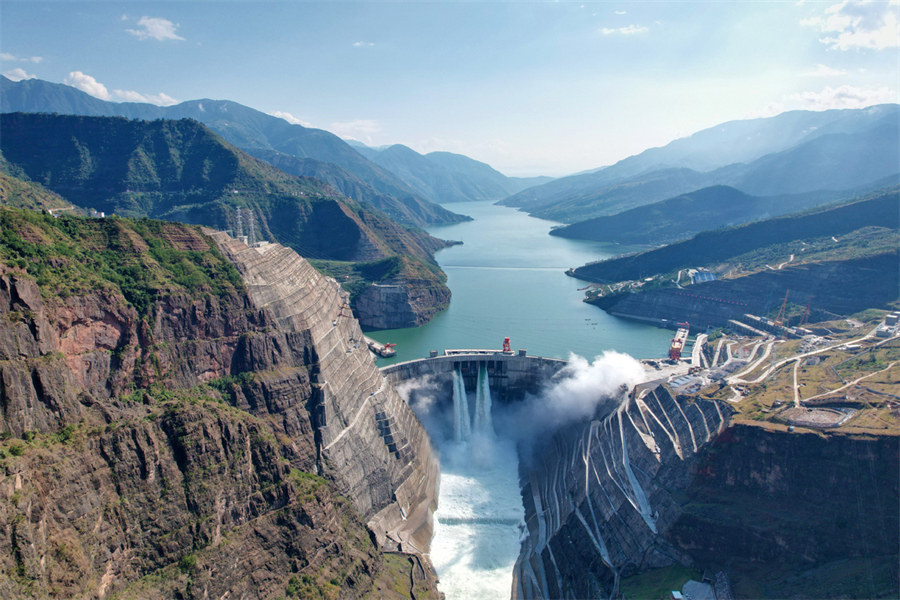Hydro stations hit peak to deal with heat wave

The Baihetan hydropower station, Nov 5, 2022. [Photo/Xinhua]
With electricity demand skyrocketing due to high temperatures, six hydropower stations on the Yangtze River recently recorded new peaks in load regulation, with the highest exceeding 32 million kilowatts.
Load regulation refers to a power plant's ability to maintain a consistent voltage level as electricity flows out of the plant, despite power supply fluctuations.
The stations in Hubei, Sichuan and Yunnan provinces, have helped alleviate the electricity shortage in East and Central China.
"Since the start of July, the output of the power stations has increased significantly, with 97 units at the six cascading power stations at peak operation, and the highest daily power generation exceeding 900 million kilowatt-hours," said Li Peng, a senior engineer with China Three Gorges Corporation's China Yangtze Power, operator of the six power stations.
"The latest peak load regulation broke the previous record of 26.175 million kW reached in 2022 for two consecutive days," he said.
On July 11, all eight hydro-generating units at the Xiangjiaba hydropower station and all 16 units at the Baihetan hydropower station were fully operational, resulting in a peak load regulation of over 28 million kW.
The next day, the Xiluodu, Gezhouba and Baihetan hydropower stations were all fully operational, resulting in peak load regulation of over 32 million kW.
Li said they are making every effort to meet the electricity demands for production and daily life. "We dynamically optimize the joint scheduling and operations of the power stations and organize their operations and management, ensuring maximum utilization of water resources under the premise of ensuring the safety of flood control," Li said.
The six power stations involved are Wudongde, Baihetan, Xiluodu, Xiangjiaba, the Three Gorges Dam and Gezhouba. The first four are located on the Jinsha River, the upper section of the Yangtze, while the other two are in the middle section of the Yangtze.
They form a 1,800-kilometer clean energy corridor, the world's largest, to transfer electricity from the resource-rich west to energy-consuming regions in the east.
The six mega power stations have a total installed capacity of 71.695 million kW, with 110 hydro-generating units. They can generate 300 billion kWh of electricity every year, reducing coal consumption by 90 million metric tons and carbon emissions by more than 240 million tons.
























